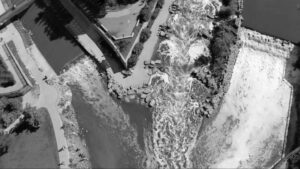We had a blast becoming herpetologists and studying reptiles and amphibians!
First we learned about some of the cool adaptations that reptiles have by dressing up as one! We dressed up some campers as rattlesnakes and learned that they have some very cool features such as scaly skin, forked tongues, jaws that can unhinge, and heat-sensing vision! Next we acted out shedding our reptilian skin by putting glue on our hand and peeling it off after it dried! Did you know that many reptiles eat their skin after they shed it? It’s full of nutrients! Then, we made two reptilian crafts- a turtle and a snake!
Reptiles:
First we learned about some of the cool adaptations that reptiles have by dressing up as one! We dressed up some campers as rattlesnakes and learned that they have some very cool features such as scaly skin, forked tongues, jaws that can unhinge, and heat-sensing vision! Next we acted out shedding our reptilian skin by putting glue on our hand and peeling it off after it dried! Did you know that many reptiles eat their skin after they shed it? It’s full of nutrients! Then, we made two reptilian crafts- a turtle and a snake!
Amphibians:
We got to dress up as a frog and learned about lots of amazing adaptations and facts! Then, we played a game as salamanders. We had to try and steal each other’s tails! Did you know if a salamander loses its tail that it can grow it back? Next, we imagined our lives as amphibians and drew landscapes from an animal’s perspective. Little things look a lot bigger when you are a tiny critter!
We got to dress up as a frog and learned about lots of amazing adaptations and facts! Then, we played a game as salamanders. We had to try and steal each other’s tails! Did you know if a salamander loses its tail that it can grow it back? Next, we imagined our lives as amphibians and drew landscapes from an animal’s perspective. Little things look a lot bigger when you are a tiny critter!
Comparisons:
We were able to take a closer look at these two similar creatures groups by making a big venn diagram and sorting out features and animal pictures into the two groups. The main differences between them are that amphibians usually have wet and smooth skin and they go through metamorphosis in their life cycle. Reptiles have scaled skin, and they usually just start small and grow bigger and bigger through their lives without much change. Both types of animals are cold blooded, usually come from eggs, and often share similar habitats.
Once we were experts, we made some acrostic poems about some of the animals we learned about!
We were able to take a closer look at these two similar creatures groups by making a big venn diagram and sorting out features and animal pictures into the two groups. The main differences between them are that amphibians usually have wet and smooth skin and they go through metamorphosis in their life cycle. Reptiles have scaled skin, and they usually just start small and grow bigger and bigger through their lives without much change. Both types of animals are cold blooded, usually come from eggs, and often share similar habitats.
Once we were experts, we made some acrostic poems about some of the animals we learned about!
And of course we spent some time exploring the Cherry Creek!




